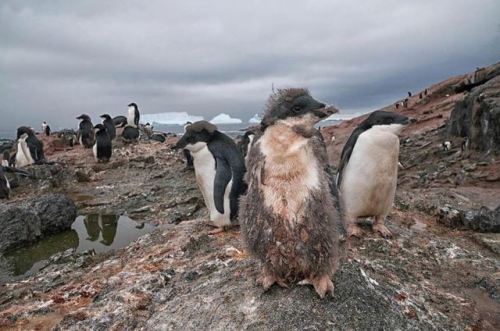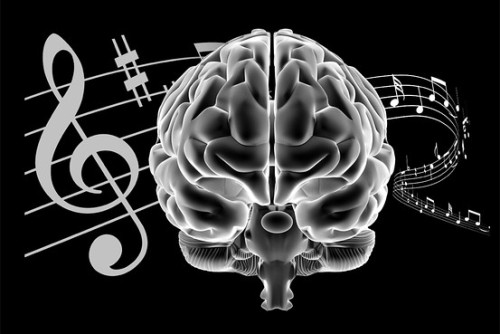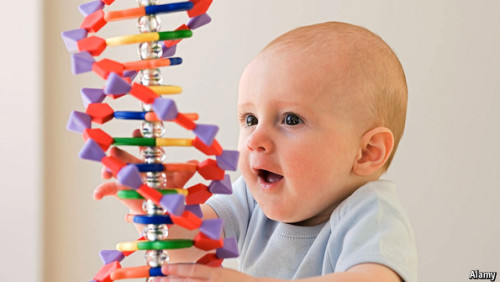#biology
Cladocera, a small crustacean.
Female copepod
Pond sample
Female copepod with eggs.
Pond sample.
Quick copepod
Something is swimming by..
Water flea?
Pond sample.
Pond sample. Any guesses on what this organism may be?
Creek sample. Organism eating algae.
Algae and microorganisms from creek sample.
Watch this caterpillar fling its beetle attacker through the air
Soft, squishy caterpillars might seem like easy prey to a hungry predator, but one species doesn’t give up without a fight. Fully developed caterpillars of the hornworm moth (Langia zenzeroides) use a mix of squeaks, strikes, and vomit to defend themselves from predators, researchers report this month in the Biological Journal of the Linnean Society.
natgeo Photo by @cristinamittermeier // Can you guess what is wrong with this penguin? We spent a month in Antarctica on assignment for @natgeo and it was not until the second week that I realized we had not seen snow once. Every day, however, we experienced several hours of incessant rain. As temperatures warm in Antarctica, the weather regime is changing from snow to rain. In the past, the penguin colony would be covered in snow but now, it is a large, muddy mess. Baby penguins are covered in fluffy down and they can easily preen themselves when it snows. When they get muddy and wet, their down loses its insulation ability and as temperatures drop at night, they become hypothermic and die.
As the debate on weather or not to protect the Antarctic Peninsula starts to play out, I hope that the members of the Convention on the Conservation of Antarctic Marine Living Resources (CCAMLR), who will be voting on this issue are inspired to protect it for all humanity.
#Followmeat@cristinamittermeier and follow the conversation at @Sea_legacy
Post link
Listen to this killer whale say ‘hello’ and ‘bye-bye’
When it comes to echoing human speech, parrots are the superstars of the animal world—but a killer whale named Wikie may not be far behind. The 14-year-old orca showed off her vocal skills by imitating her trainer’s words, saying things like “Amy” and “bye-bye.” Researchers got her to do this by first training her to obey a hand signal that meant “copy this,” which, for instance, was used to instruct her to copy another orca squirting water into the air. Then, they presented her with sounds she had never heard before—five sounds from other orcas and six phrases spoken by trainers—and asked her to repeat them. In all trials, Wikie responded to the command by uttering something that roughly matched the sound that she was asked to copy, the team reports today in the Proceedings of the Royal Society B. Sometimes it took as many as 17 tries to get it right, but she got four of them on her first try, including the human phrases “hello” and “one, two, three.” Orcas form tight-knit groups in the wild, each with their own dialect, so scientists think that their ability to learn new sounds may be key to how they communicate and interact with one other.
Community music programs enhance brain function in at-risk children
A Northwestern University study provides the first direct evidence that a community music program for at-risk youth has a biological effect on children’s developing nervous systems.
Two years of music lessons improved the precision with which the children’s brains distinguished similar speech sounds, a neural process that is linked to language and reading skills. One year of training, however, was insufficient to spark changes in the nervous system.
“This research demonstrates that community music programs can literally ‘remodel’ children’s brains in a way that improves sound processing, which could lead to better learning and language skills,” said study lead author Nina Kraus, the Hugh Knowles professor of communication sciences in the School of Communication and of neurobiology and physiology in the Weinberg College of Arts and Sciences at Northwestern.
“Music Enrichment Programs Improve the Neural Encoding of Speech in At-Risk Children,” published in the Journal of Neuroscience, is one of the few studies to evaluate biological changes following participation in an existing, successful music education program.
Post link
High blood sugar in young children with type 1 diabetes linked to changes in brain growth
Investigators have found that young children with type 1 diabetes (T1D) have slower brain growth compared to children without diabetes. A new study, published in the December issue of Diabetes, now available ahead of print, suggests that continued exposure to hyperglycemia, or high blood sugars, may be detrimental to the developing brain. The research was supported by the National Institutes of Health (NIH).
“Our results show the potential vulnerability of young developing brains to abnormally elevated glucose levels, even when the diabetes duration has been relatively brief,” said Nelly Mauras, MD, Chief, Division of Endocrinology, Diabetes & Metabolism at Nemours Children’s Clinic in Jacksonville, Fla., and lead author of the study.
Post link
‘Designer babies’ debate should start, scientists say-
Rapid progress in genetics is making “designer babies” more likely and society needs to be prepared, leading scientists have told the BBC. Dr Tony Perry, a pioneer in cloning, has announced precise DNA editing at the moment of conception in mice. He said huge advances in the past two years meant “designer babies” were no longer HG Wells territory. Other leading scientists and bioethicists argue it is time for a serious public debate on the issue. Designer babies - genetically modified for beauty, intelligence or to be free of disease - have long been a topic of science fiction. Dr Perry, who was part of the teams to clone the first mice and pigs, said the prospect was still fiction, but science was rapidly catching up to make elements of it possible. In the journal Scientific Reports, he details precisely editing the genome of mice at the point DNA from the sperm and egg come together. Dr Perry, who is based at the University of Bath, told the BBC: “We used a pair of molecular scissors and a molecular sat-nav that tells the scissors where to cut. “It is approaching 100% efficiency already, it’s a case of ‘you shoot you score’.”
Post link
Children’s vulnerability reflected in genes
Some children are more sensitive to their environments, for better and for worse. Now Duke University researchers have identified a gene variant that may serve as a marker for these children, who are among society’s most vulnerable.
“The findings are a step toward understanding the biology of what makes a child particularly sensitive to positive and negative environments,” said Dustin Albert, a research scientist at the Duke Center for Child and Family Policy. “This gives us an important clue about some of the children who need help the most.”
Drawing on two decades worth of data on high-risk first-graders from four locations across the country, the study found that children from high-risk backgrounds who also carried a certain common gene variant were extremely likely to develop serious problems as adults. Left untreated, 75 percent with the gene variant developed psychological problems by age 25, including alcohol abuse, substance abuse and antisocial personality disorder.
The picture changed dramatically, though, when children with the gene variant participated in an intensive program called the Fast Track Project. After receiving support services in childhood, just 18 percent developed psychopathology as adults.
CITATION: “Can Genetics Predict Response to Complex Behavioral Interventions? Evidence from a Genetic Analysis of the Fast Track Randomized Control Trial,” Dustin Albert, Daniel W. Belsky, D. Max Crowley, Conduct Problems Prevention Research Group, Kenneth A. Dodge, et al. Journal of Policy Analysis and Management, Jan. 2, 2015. DOI: 10.1002/pam.21811
Post link
Celiac disease rate among young children has almost tripled in past 20 years
The number of young children diagnosed with coeliac disease in the UK has almost tripled over the past 20 years, but kids from poorer families are only half as likely to be diagnosed with the condition, reveals research published online in Archives of Disease in Childhood.
The evidence to date suggests that up to 1% of all children in the UK have blood markers for coeliac disease, an autoimmune reaction to dietary gluten from wheat, barley, and rye.
F. Zingone, J. West, C. J. Crooks, K. M. Fleming, T. R. Card, C. Ciacci, L. J. Tata. Socioeconomic variation in the incidence of childhood coeliac disease in the UK.Archives of Disease in Childhood, 2015; DOI: 10.1136/archdischild-2014-307105
Gluten protein fragments have been identified that stimulate the immune system, leading to inflammation of the intestine and shortening of the intestinal villi.UCLA
Post link
Mental Health, ADHD, and Drug Abuse
The overlap between substance problems and mental concerns is large
The overlap between substance problems and mental concerns, such as mood and behavior disorders, is large. If you have one, you’re more likely to find yourself with the other also.
For example:
- People with depression or anxiety are roughly twice as likely to have some kind of drug use disorder.
- Research has found that more than 40 percent of people withbipolar disorder will have a substance use disorder during their lives.2
- The converse is also true. Among those who are seeking help for a substance use disorder, as many as 50 to 75 percent will also have anxiety, depression, or some other mental health issue.3
And here’s another common condition that’s also associated with a significantly increased risk of illicit drug use: ADHD. The relationship is quite high, and it begins in adolescence and continues into adulthood.
A 2011 study that followed kids and teens for 10 years found that those who were diagnosed with ADHD were 47 percent more likely to have a substance use disorder later in life than their peers without ADHD.
So which condition causes the other?
This question arises in my psychiatric practice regularly. In all likelihood, some causation is traveling in both directions. Drug use—especially during adolescence—increases the chances of various forms of mental illness. Given that drugs can harm normal brain development, the drug use likely causes mental illness to arise in people who were already vulnerable to developing it. On the other hand, some people with a mental health issue may use drugs to self-medicate symptoms.
In any particular person, discovering which caused which is often impossible. Knowing the order in which these problems became apparent can be informative. But it’s not enough to lead us to state with certainty that one caused the other, because we usually can’t know if the second problem would have arisen anyway.
Reassuring findings about ADHD meds
This leads us to an important question about ADHD that concerns many parents. Few folks say something to the effect of: “Wait … psychiatrists and other doctors are putting kids with ADHD on stimulant drugs, which have enough kick that some people use them recreationally. Isn’t it possible that ADHD medications themselves put kids at higher risk of developing substance problems?
That’s a valid concern, given that nearly 3 million kids and teens were being treated with medication for ADHD in 2007. However, although some might worry that treating ADHD symptoms with psychostimulant medications would result in later illicit drug use, a number of studies over the years have concluded that there seems to be “no compelling evidence that stimulant treatment of children with ADHD leads to an increased risk for substance experimentation, use, dependence, or abuse by adulthood.”
It’s even possible that treating ADHD with medications helps protect kids from later drug use. One 2008 study followed 114 children with ADHD for five years, until they were 16 years old on average. Ninety-four of them had been treated with stimulant medications. The researchers found no increased risk of substance use disorders linked to treatment with stimulant medications. In fact, they found that kids who took these medications were 73 percent less likely to have a substance use disorder.
Thus, although it might make intuitive sense to be concerned that treating ADHD with stimulants is setting the child up for trouble with drugs down the line, research does not bear that out and, in fact, it suggests the opposite.
The best advice for someone with either a substance use problem or mental health disorder is to remain vigilant for the emergence of the other type of problem. Their interrelationship is complex and still being sorted out – and it’s a good idea to tell any doctor who’s treating you if you have either (or both) of these issues.
Post link








